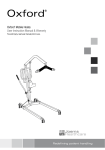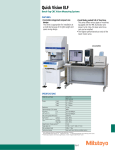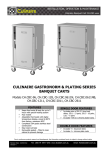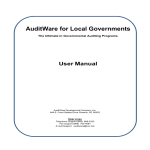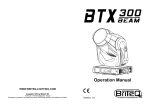Download Oxford Maxi 150
Transcript
U s e r I n s t r u cOt xi foo nr d MM aa xni u1a5 0l Maxi 150 P A T I E N T L I F T S En gl ish ELECTRIC AND HYDRAULIC MODELS Oxford Maxi 150 Contents Oxford Maxi 150 Electric Lift illustration ..................................... page 2 Introduction ................................................................................ page 3 Oxford Maxi 150 Hydraulic Lift illustration .................................. page 4 Assembly and commissioning instructions ................................ page 5 Assembly of mast to base illustration ......................................... page 6 Safety precautions ...................................................................... page 8 Electric lift rear controls illustration ............................................ page 9 Operating instructions ............................................................... page 10 Charging instructions ................................................................ page 12 Maintenance for the Oxford Maxi 150 ........................................ page 13 Maintenance, Inspection and Test ............................................. page 14 Technical Specifications ............................................................page 16 Slings for use with the Oxford Maxi 150 ....................................page 17 User guide for the Quickfit Sling ................................................page 19 User guide for the Full Back Sling .............................................. page 23 User guide for the Quickfit Deluxe Sling ....................................page 27 User guide for the St. Ebbas/Longseat Sling ............................. page 31 User guide for the Oxford Access Sling .....................................page 35 Servicing, Repairs, Inspections & Testing ................................. page 39 1 Oxford Maxi 150 BOOM MAST HAND CONTROL SPREADER BAR PUSH HANDLE ACTUATOR LEG ADJUSTING LEVER REAR BRAKED CASTOR EMERGENCY STOP BUTTON OXFORD MAXI 150 (ELECTRIC) 2 Oxford Maxi 150 About Your Lift The Oxford Maxi 150 is an electrically operated lift based on the Oxford Major but with a greater lifting height. The safe working load of the Maxi is 150kg. Each lift is fully assembled, load tested and certified before being partially dismantled for packing. The packing consists of a strong, purpose built carton and is used for both export and domestic markets to ensure the safe arrival of the lift. A number of documents are supplied in a wallet packed with each lift and should be kept safely for future reference. Test Certificate User Manual Dealer Guarantee Card Customer Satisfaction Card The TEST CERTIFICATE is an important document and will be required for your insurance records. It is valid for six months and after it has expired the lift should be inspected and serviced for the following six month period. Servicing and periodic testing can be carried out by your supplier. Please ensure your lift is included in their maintenance schedule. The Oxford Maxi 150 is suitable for the following CATEGORIES of lift within the working parameters of the lifts specified in the TECHNICAL SPECIFICATIONS. Category A Category B Category C Category D Category E Category F - Wheelchair Bed Bath Toilet/Shower Chair Floor 90 degree Rotation The Oxford Maxi 150 is suitable for patients in the SITTING, SITTING/RECUMBENT and RECUMBENT positions. The CE mark The Oxford Maxi 150 carries the CE mark and complies with the following EC directives: Medical Device Directive (93/42/EEC) EMC Directive (89/336/EEC) (Electrics only) Low Voltage Directive (73/23/EEC) (Electrics only) 3 Oxford Maxi 150 BOOM MAST PUSH HANDLE SPREADER BAR CRANK HANDLE LEG ADJUSTING LEVER RELEASE VALVE HYDRAULIC UNIT REAR BRAKED CASTOR OXFORD MAXI 150 (HYDRAULIC) 4 Oxford Maxi 150 Assembly and Commissioning Instructions Place the carton in a clear working area and open carefully. The carton contains: Main Wheeled Chassis Mast and Boom Assembly Led Adjusting Handle Wallet Containing Documents Handcontrol (electric only) Battery Charger (electric only) 1. Remove all the parts from the carton and place on the floor, taking care to protect the finish from damage. SAFETY NOTE: Some of the parts are heavy and will need to be lifted with care. You may need assistance with the heavier assemblies. 2. Apply the brakes on the rear castors of the chassis. 3. Fit the mast assembly to the chassis. The mast is located into the rectangular socket on the top centre of the chassis. SAFETY NOTE: Avoid trapping fingers. Keep fingers away from the end of the mast when inserting into the socket. 4. When the mast is fully engaged with the socket, turn the mast locking knob clockwise until fully tightened. SAFETY NOTE: Full engagement of the mast is indicated by the label on the side of the mast. 5. Remove the screw from the leg adjusting lever located at the rear of the chassis. Fit the leg adjusting handle through the gate on the mast and push the open end over the leg adjusting lever. Align the notch in the handle with the cross pin in the lever. The handle is retained by a screw through a clearance hole in the handle into a threaded hole in the lever. Insert screw and fully tighten. 6. Check the legs of the lift open and close satisfactorily. 7. Check the red emergency stop button, located at the base of the mast, is in the OFF (up) position. 8. Fit the handcontrol to the handcontrol socket located at the base of the mast immediately behind the red emergency stop switch. 5 Oxford Maxi 150 ACTUATOR PLUG LEG ADJUSTING LEVER MAST LOCKING KNOB STRAIGHTLINE STEERING DEVICE ASSEMBLY OF MAST TO BASE 6 Oxford Maxi 150 Assembly and Commissioning Instructions (cont.) Important The handcontrol plug is indexed and can only be fitted one way. Do not force, but make sure the plug of the handcontrol is firmly pushed into the socket. 9. Plug the actuator jack plug into the actuator socket located at the base of the mast, on the opposite side to the red emergency stop button. 10. Push the up and down buttons on the handcontrol and confirm the boom rises and lowers. The lift is now ready for use. 7 Oxford Maxi 150 Safety Precautions Please read and follow the safety precautions listed below. The operation and use of Oxford patient lifts is simple and straightforward. Following these few basic safety precautions will make lifting operations easy and trouble free. ALWAYS plan your lifting operations before commencing. ALWAYS carry out the DAILY CHECK LIST before using the lift. ALWAYS familiarise yourself with the operating control and safety features of a 8 lift before lifting a patient. DO NOT use a sling unless it is recommended for use with the lift. ALWAYS check the sling is suitable for the particular patient and is of the correct size and capacity. NEVER use a sling which is frayed or damaged. ALWAYS fit the sling according to the instructions in the user manual. ALWAYS check the safe working load of the lift is suitable for the weight of the patient. ALWAYS carry out lifting according to the instructions in the user manual. NEVER disconnect or bypass a control or safety feature because it seems easier to operate the lift. NEVER force an operating or safety control. All controls are easy to use and do not require excessive force to operate. If a control is not working easily there will be a reason. Forcing will only strain or damage the lift and may compromise safety. DO NOT lift a patient with the castor brakes on. DO NOT attempt to manoeuvre the lift by pushing on the mast, boom or patient. ALWAYS manoeuvre the lift with the handle provided. ALWAYS lower the patient to the lowest comfortable position before transfers. DO NOT push a loaded lift at speeds which exceed a slow walking pace (3 Kilometres/hour 0.8 metres/second). DO NOT push the lift over uneven or rough ground, particularly if loaded. DO NOT attempt to push or pull a loaded lift over a floor obstruction which the castors are unable to ride over easily. DO NOT bump the lift down steps, loaded or unloaded. DO NOT attempt to negotiate a loaded lift on a slope which exceeds 1:12 (approximately 5 degrees). Sunrise Medical recommend a second helper is present when moving a patient on a slope. Oxford Maxi 150 EMERGENCY STOP BUTTON CHARGING POINT HANDCONTROL SOCKET EMERGENCY DESCENT BUTTON OXFORD MAXI 150 REAR CONTROLS 9 Oxford Maxi 150 Safety Precautions (cont.) DO NOT park a loaded lift on ANY sloping surface. DO NOT use electric lifts in a shower. DO NOT charge an electric lift in a bathroom or shower room. DO NOT lift a patient unless you are trained and competent to do so. YOUR lift is for patient lifting. DO NOT use it, or allow it to be used, for any other purpose. Operating an Oxford MAXI 150 1. Leg adjustment. The legs on the Maxi are adjustable for width. The legs can be opened to enable access around armchairs or wheelchairs. For transferring and negotiating narrow doorways and passages the lift legs should be in the closed position. To achieve the adjustment, the leg adjuster handle, located at the rear of the mast, is moved in towards the mast and then sideways from RIGHT (fully closed) to LEFT (fully open). The adjustment can be carried out with the patient in the lift, but loaded or unloaded the adjustment should be made when the lift is moving. 2. Castors and Braking. The lift has two braked castors which can be applied for parking. When lifting, the castors should be left free and unbraked. The lift will then be able to move to the centre of gravity of the lift. If the brakes are applied it is the patient that will swing to the centre of gravity and this may prove disconcerting and uncomfortable. 3. Straight line steering. One of the rear castors is fitted with a straight line steering device. To engage the device simply swing the U shaped bar over the end of the leg. There is no need to fit the bar over the castor as it will automatically engage as you move off. 4. Raising and lowering the boom. The movement of the boom is achieved by a powerful electric actuator which is controlled by a simple handcontrol unit. The handcontrol has two buttons with directional arrows UP and DOWN. The actuator stops automatically at the limit of travel in both directions. The handcontrol plugs into a socket on the base of the power pack. The handcontrol has a hook mounted on the back which allows the handcontrol to be parked on any suitable part of the lift. 5. Emergency Stop. The red Emergency Stop Button is located on the power pack and is activated by pressing in. This will cut all power to the lift and can only be reset by twisting the button anticlockwise and releasing. 10 Oxford Maxi 150 6. Emergency Down : An emergency lowering device is built into the electric actuator and is purely mechanical, it will operate even if no power is available. The device is operated by a red plastic moulding at the base of the ram tube. In a emergency this moulding can be pulled upwards and this will allow the boom to slowly descend. Note: The boom will not descend under its own weight 7. Batteries. The batteries are protected from deep discharge by a LOW VOLTAGE ALARM. This will sound when the batteries need recharging and the handcontrol is being operated. It will not sound independently of the handcontrol being operated. DO NOT IGNORE THIS WARNING ALARM. Complete the lifting operation and place the lift on charge (see charging instructions). 8. Slings. The selected sling is attached to the spreader bar hooks, each sling is supplied with instructions and they are reproduced in this manual. The instructions should be followed carefully. Use only SUNRISE MEDICAL LTD slings of the Quickfit, Quickfit Deluxe, Longseat, Full Back and Access range. 11 Oxford Maxi 150 Charging Instructions For The Maxi 150 The batteries are located in the chassis and are charged through a dedicated socket in the rear. The socket is labelled CHARGING POINT. 1. Plug the charger into the lift charging socket. The plug and socket are indexed and can only be fitted in one position. NOTE: The lift will not work with the charger plug connected. This is an intentional safety feature. 2. Plug the charger into a convenient mains outlet and switch the outlet ON. 3. Charging is fully automatic. The status of the charging is indicated by two LED indicators (see table below). Note: Even if the charger is left plugged in for extended periods it will not allow the batteries to overcharge. Charger Status Bulk charger mode Battery charged Battery reversal detected High temperature detected Short circuit Open circuit LED Indicators Yellow - static ON Green - static ON Yellow - flashing Yellow + Green flashing simultaneously Yellow + Green flashing alternately Yellow + Green static simultaneously 4. To return the lift to service, switch OFF the mains supply and unplug the charger. Unplug the charger plug from the lift. The charger plug is locked into the charger socket during use and must be released by pushing a small metal pad located at the top edge of the socket. DO NOT pull on the cable to disengage the plug. With the charger plug disconnected the lift is ready for use. 12 The charging of Oxford electric lifts is simple and straightforward, but it is important to follow the charging instructions closely. Please pay particular attention to the following points, they will help you avoid problems with discharged batteries. KEEP the batteries fully charged. Place the lift on charge whenever it is not in use. If it is more convenient to do so, place the lift on charge every night. The charger will not allow the batteries to overcharge. NEVER run the batteries completely flat. If the audible warning sounds, complete the lifting operation in hand and place the lift on charge. NEVER store the lift for long periods without regular charging throughout the storage period. ALWAYS make sure the mains power to the charger is switched off before connecting or disconnecting the charger to or from the lift. NEVER leave the charger plugged in to the lift with the mains power off. NEVER disconnect the charger plug by pulling on the cable. Oxford Maxi 150 Maintenance For The Oxford Maxi 150 All Oxford products are designed for minimum maintenance, however some safety checks and procedures are required. A schedule of DAILY tasks are detailed below. Daily checks and a biannual service, inspection and test will ensure a lift is kept in optimum safe working condition. A list of spare parts is available upon request. The LOAD TEST and CERTIFICATION should only be carried out by qualified personnel or an authorised service dealer. Dai l y C h e c k L i s t Sunrise Medical Ltd strongly recommend the following checks are carried out on a daily basis and before using the lift. MAKE sure the lift moves freely on its castors. MAKE sure the spreader bar is free to rotate and swing. Check the spreader bar is firmly attached to the boom. EXAMINE the sling hooks on the spreader bar and side suspenders for excessive wear. If in doubt - do not use. MAKE sure the legs open and close correctly. OPERATE the handcontrol or the hydraulic unit to confirm the boom raises and lowers satisfactorily. CONFIRM the lift is not giving a low battery alarm when the handcontrol is operated (electric lifts only). If the alarm sounds DO NOT use and place on charge immediately. ON electric powered lifts check the operation of the emergency stop button. ON hydraulically operated lifts check for hydraulic fluid leakage. Any leakage should be reported to a service engineer immediately and the lift should not be used until it has been checked out. ON lifts with detachable masts make sure the mast is fully engaged and the locking knob is fully tightened. EXAMINE slings for fraying or other damage. DO NOT use any sling with fraying or damage to the suspension straps or tears in the body of the sling. 13 Oxford Maxi 150 Maintenance, Inspection And Test Sunrise Medical Ltd recommend a thorough inspection and test of the Oxford Maxi 150 lift and lifting accessories, slings etc. is carried out every six months. The examination and test should be conducted according to the recommendations and procedures below. Sunrise Medical Ltd recommend maintenance, inspection and certified testing is carried out by authorised service dealers only. Note: These recommendations are in compliance with the requirements of 1998 No 2307 Health and Safety: The Lifting Operations and Lifting Equipment Regulations 1998. This is a UK regulation. Outside the UK please check your local requirements. SPREADER BAR: Check the spreader bar for freedom of rotation and swing. Check for wear on the central pivot. Check for firm attachment to the boom. Inspect for excessive wear on the sling hooks and any side suspenders used in conjunction with the spreader bar. Lubricate central pivot with light mineral based grease BOOM: Check the attachment of the boom to the mast. Make sure there is only minimal side movement of the boom and the boom is free to rotate on the boom bearing. Check the actuator or hydraulic unit mounting on the boom. MAST: Check the operation of the mast locking device. Make sure the mast fully engages into the socket. Check the bottom actuator or hydraulic unit mounting. CROSSMEMBER: Check the function of the Emergency Stop button. Inspect the handcontrol socket for correct fitting. Inspect the charging socket for correct fitting. Check the handcontrol for correct functioning. Check the fuse for correct rating and fuseholder for firm fitting and possible damage. LEG ADJUSTMENT: Check the leg linkages are secure and the leg adjustment handle is located correctly in the leg adjustment gate. Operate the leg adjusting handle and confirm smooth opening and closing of the legs. Adjust linkages if necessary. LEG PIVOTS: Check the leg pivots are secure and the legs pivot freely. Any stiffness must be investigated. Strip out the leg pivots and lubricate with a light mineral based grease if in any doubt. Make sure there is no excessive play in the leg pivots. 14 Oxford Maxi 150 CASTORS: Check all castors for firm attachment to the legs. Check for free rotation of the castor and the wheels. Remove any build up of threads, hair or fluff. Lubricate if necessary with a light mineral based grease. Check correct operation of the brakes. ACTUATOR: The actuator should require no maintenance other than checking for correct operation and listening for unusual noise. Check the operation of the emergency lowering function. BATTERIES: The batteries are housed in the power pack and should not require maintenance other than the regular charging as detailed in the charging instructions. CLEANING: Clean with ordinary soap and water and/or any hard surface disinfectant. Harsh chemical cleaners or abrasives should be avoided as these may damage the surface finish of the lift. Avoid wetting any of the electrical parts. LOAD TEST: The load test should be carried out in accordance with the manufacturers test procedures. It is strongly recommended the testing is carried out by an authorised service dealer. CERTIFICATION: An authorised service dealer will issue a test certificate after satisfactory completion of the load test. This certificate will be valid for six months. 15 Oxford Maxi 150 Te c h n i c a l S p e c i f i c a t i o n s Oxford Maxi 150 Safe Working Load Maximum Overall Length 1272mm Minimum Overall Length 1200mm Maximum Overall Height 2152mm Minimum Overall Height 1609mm Spreader Bar Max. Height 1915mm Spreader Bar Min. Height Height At Maximum Reach 1344mm Reach At Maximum Height 390mm Reach At Minimum Height 390mm Maximum Reach Turning Radius Legs Open - 150kgs 715mm 647mm 1345 mm External Width 1180mm Internal Width 1160mm Legs Closed - External Width 635mm Internal Width 506mm Overall Height Of Legs Ground Clearance 110mm Front Twin Castors 75mm Rear Twin Castors 100mm Weights: Mast & Boom Assembly 21kgs Base Assembly 28kgs 22mm Electrical Specifications Batteries Battery Capacity Charger Rated Input 230V 50/60Hz Charger Rated Output 27.4/29.0 [email protected] Fuse-Lift FSA 1/4 x 1 1/4 Electric Shock Protection Charger - Class II Lift - Internal Power Source Degree Of Shock Protection Charger - Type B Lift - Type B 16 2 X 12 volt Rechargeable sealed lead acid type 7 Ampere hours Oxford Maxi 150 Slings For Use With The Oxford Maxi 150 Lift Sunrise Medical Ltd has designed a range of slings to be used with the Oxford Maxi 150 Lift. Do not use slings other than those listed below: Oxford Quickfit Sling Oxford Quickfit Deluxe Sling Oxford Longseat Sling Oxford Access Sling Oxford Full Back Sling Standing Harness Special requirement slings can be made to customers own specification, consult your dealer for details. When selecting a sling from the Oxford range be sure to assess the suitability of the type of sling for the patient to be lifted. The following guides will assist in the correct selection. Sunrise Medical Ltd recommend only Oxford slings are used with Oxford Lifts 17 Oxford Maxi 150 18 Oxford Maxi 150 User Guide For The Quickfit Sling The Quickfit sling is an easy fit, general purpose sling designed to fit approximately 85% of patients. This sling is unsuitable for the lifting of amputees. Other patients must be assessed for suitability by a qualified person. The Quickfit sling is suitable for the following categories of lift: Category A - Wheelchair Category B - Bed Category C - Bath Category D - Toilet/Shower chair Category E - Floor The Quickfit sling can be used for patients in the SITTING, SITTING/RECUMBENT and RECUMBENT positions The Quickfit sling has been designed for use with the Oxford six hook spreader bar, additionally a pair of side suspenders are supplied with each Quickfit sling and can provide additional comfort for the patient. A head support attachment is also available and is recommended when lifting from the recumbent position. Additional slings are available to suit individual needs. You are advised to always seek the advice of an authorised dealer before purchasing. Sunrise Medical will be pleased to advise your nearest authorised dealer who will be able to handle all purchasing, training and after sale servicing. DO NOT use any other manufacturers sling with an Oxford lift. DO NOT use an Oxford sling with any other manufacturers lift. 19 Oxford Maxi 150 How To Fit An Oxford Quickfit Sling Sitting, Sitting/Recumbent Position Fig 1 Make sure the hand grips and seams are on the outside of the sling. Feed the sling down the back of the patient, leaving the commode aperture at the base of the spine. Check the sling is square across the shoulders. Fig 3 Cross over the leg straps and attach the longest loops to the front hooks on the lift spreader bar. For additional comfort Sunrise recommend the use of side suspenders as shown. 20 Fig 2 Raise the patients leg and feed the leg strap under, and up between the legs. Make sure the sling is not twisted or creased under the thigh. Repeat the procedure for the other leg. Fig 4 Raise the lift and attach the shortest loops of the shoulder straps to the spreader bar or side suspenders. The lift may move towards the patient as you do this. When reseating the patient the hand grips may be used to ensure a good posture. Oxford Maxi 150 Alternative Sitting, Sitting/Recumbent Position Fig 5 For closed leg position, cross over the straps under both legs and attach the straps as shown. This can provide additional comfort but is less convenient for toileting. Fig 6 The longer the shoulder strap attachment the more reclined the patient will be. Recumbent Position Fig 7 Draw sheet roll the patient onto the sling, ensuring the top of the commode aperture is at the base of the spine. A head support roll is recommended for this lifting operation. Fig 8 Cross the leg straps between the legs and proceed to attach the sling in the same way as the sitting position. Use the shortest shoulder strap possible. Sunrise Medical recommend slings are checked regularly and before use for fraying or damage. Do not use slings which are worn or damaged 21 Oxford Maxi 150 Sizing Each sling is marked with the following colour coded symbols, two of which will be crossed out. Your sling will be the uncrossed size ie in the example given Small (red) SMALL (Red) MEDIUM (Yellow) LARGE (Green) The straps on the sling are also colour coded. For example, a medium sling will have yellow loops in the positions normally used for a medium patient. SAFE WORKING LOAD OF THE QUICKFIT SLING - 175 kgs IMPORTANT NOTE: It is important to take the safe working load of the Lift as the maximum permissible load of any lifting operation. The Quickfit sling is designed for use with the Oxford 150A, Mini, Midi, Major, Maxi, Dipper, Stowaway and Monolift lifts. Washing Instructions Wash in a mild soap solution up to 71 degrees centigrade. DO NOT use biological detergents. DO NOT bleach. DRY in a warm room or in the open air. DO NOT place on convector heaters or steam pipes. DO NOT dry in tumble dryers which exceed 120 degrees centigrade. Symbols 71 C Do not exceed 71 degrees centigrade 22 Do not bleach Oxford Maxi 150 User Guide for The Full Back Sling The Full Back sling is an easy fit, contoured sling designed to fit approximately 85-90% of patients. The design is based on the traditional Quickfit sling but offers greater comfort and does away with the need for side suspenders. It has an integral, boned head support and leg padding. This sling is unsuitable for the lifting of amputees. Other patients must be assessed for suitability by a qualified person. The Full Back sling is suitable for the following categories of lift: Category A - Wheelchair Category B - Bed Category C - Bath Category D - Toilet/Shower chair Category E - Floor The Full Back sling can be used for patients in the SITTING, SITTING/RECUMBENT and RECUMBENT positions The Full Back sling has been designed for use with the Oxford six hook spreader bar. Additional slings are available to suit individual needs. You are advised to always seek the advice of an authorised dealer before purchasing. Sunrise Medical will be pleased to advise your nearest authorised dealer who will be able to handle all purchasing, training and after sale servicing. . DO NOT use any other manufacturers sling with an Oxford lift. DO NOT use an Oxford sling with any other manufacturers lift. 23 Oxford Maxi 150 How To Fit An Oxford Full Back Sling Sitting, Sitting/Recumbent Position Fig 1 Raise the patients leg and feed the padded leg piece under and up between the legs. Ensure that the sling is not twisted or creased under the thigh. Repeat this procedure for the other leg. Fig 2 Feed the right leg support through the strap on the left leg support. Cross over leg straps, pass one leg strap through the other and attach to hoist on front hooks. GOLDEN TIPS 1. THE PATIENTS POSTURE CAN BE ALTERED BY ADJUSTING BOTH SHOULDER STRAPS. 2. IF IN DOUBT, ATTACH TO COLOURED LOOPS. 3. KEEP SHOULDER STRAPS AT EQUAL LENGTH. Fig 3 Raise lift to convenient height and attach the shoulder straps as shown. You may then raise the patient to the required height. When seating the patient the hand grip on the back of the sling may be used to ensure a good seated posture. 24 Oxford Maxi 150 Recumbent Position Fig 4 Draw sheet roll the patient onto the sling, ensuring that the top of the commode aperture is at the base of the spine. Bring the leg support straps up and between the patients legs and proceed as from the seated position, attaching to the shortest possible loops. N.B. If you wish to place the patient onto a high bed it may be necessary to lower the patient onto an intermediate surface and adjust the strap length. Fig 5 25 Oxford Maxi 150 Sizing Each sling is marked with the following colour coded symbols, three of which will be crossed out. Your sling will be the uncrossed size i.e. in the example given Small (Red) PAEDIATRIC (Brown) SMALL (Red) MEDIUM (Yellow) LARGE (Green) The straps on the sling are also colour coded. For example, a medium sling will have yellow loops in the positions normally used for a medium patient. SAFE WORKING LOAD OF THE FULL BACK SLING - 175 kgs IMPORTANT NOTE: It is important to take the safe working load of the Lift as the maximum permissible load of any lifting operation. The Full Back sling is designed for use with the Oxford 150A, Mini, Midi, Major, Maxi, Dipper, Stowaway and Monolift lifts. Washing Instructions Wash in a mild soap solution up to 71 degrees centigrade. DO NOT use biological detergents. DO NOT bleach. DRY in a warm room or in the open air. DO NOT place on convector heaters or steam pipes. DO NOT dry in tumble dryers which exceed 120 degrees centigrade. Symbols 71 C Do not exceed 71 degrees centigrade 26 Do not bleach Oxford Maxi 150 User Guide for The Oxford Quickfit Deluxe Sling The Quickfit Deluxe sling is a development of the Quickfit and designed to suit 95% of patients. It provides a more comfortable and supportive lift without the need of side suspenders. It can be fleece lined for additional comfort. This sling is suitable for the lifting of some amputees, but patients must be individually assessed for suitability by a qualified person. The Quickfit Deluxe sling is suitable for the following categories of lift: Category A - Wheelchair Category B - Bed Category C - Bath Category D - Toilet/Shower chair Category E - Floor The Quickfit Deluxe sling can be used for patients in the SITTING, SITTING/ RECUMBENT and RECUMBENT positions The Quickfit Deluxe sling has been designed for use with the Oxford six hook spreader bar. A head support attachment is also available and is recommended when lifting from the recumbent position. Additional slings are available to suit individual needs. You are advised to always seek the advice of an authorised dealer before purchasing. Sunrise Medical will be pleased to advise your nearest authorised dealer who will be able to handle all purchasing, training and after sale servicing. DO NOT use any other manufacturers sling with an Oxford lift. DO NOT use an Oxford sling with any other manufacturers lift. 27 Oxford Maxi 150 How To Fit An Oxford Quickfit Deluxe Sling Sitting, Sitting/Recumbent Position Fig 1 Make sure the hand grips and seams are on the outside of the sling. Feed the sling down the back of the patient, leaving the commode aperture at the base of the spine. Check the sling is square across the shoulders. Fig 3 Pass strap C up through strap B. Repeat for the other leg using strap D through strap A. 28 Fig 2 Bring the longest leg piece forward so that it is parallel with the long bone of the thigh. Ensuring the leg piece is not twisted, take the shortest leg piece stiffener under, and up between the legs. Repeat this procedure with the other leg. Cross strap A through strap B. Fig 4 Check the sling is smooth under the patient and confirm the position is comfortable. Move the lift into position and attach the leg straps to the spreader bar by the coloured loops. Raise the lift and attach the shoulder straps to the spreader bar using the coloured loops. This maintains the patient in an upright sitting position. The lift may move towards the patient as you do this. When reseating the patient the hand grips may be used to ensure a good posture. Oxford Maxi 150 Alternative Sitting, Sitting/Recumbent Position Fig 5 For closed leg position, straps may be crossed under both legs and attached as illustrated. Ensure leg straps C and D are passed through straps A and B and attached to the spreader bar. This can provide additional comfort and can be used for some amputees. Fig 6 The longer you attach the shoulder straps the more reclined the patient will be. Recumbent Position Fig 7 Draw sheet roll the patient onto the sling, making sure the commode aperture is at the base of the spine. Fig 8 Cross leg strap A and B under and between the legs and feed A through B. Feed C and D through the long loops on A and B. Then proceed to attach the sling to the spreader bar in the same way as the Sitting position. Sunrise Medical recommend slings are checked regularly and before use for fraying or damage 29 Oxford Maxi 150 Sizing Each sling is marked with the following colour coded symbols, two of which will be crossed out. Your sling will be the uncrossed size ie in the example given Small (red) SMALL (Red) MEDIUM (Yellow) LARGE (Green) The straps on the sling are also colour coded. For example, a medium sling will have yellow loops in the positions normally used for a medium patient. SAFE WORKING LOAD OF THE QUICKFIT DELUXE SLING - 175 kgs IMPORTANT NOTE: It is important to take the safe working load of the Lift as the maximum permissible load of any lifting operation. The Quickfit deluxe sling is designed for use with the Oxford 150A, Mini, Midi, Major, Maxi, Dipper, Stowaway and Monolift lifts. Washing Instructions Wash in a mild soap solution up to 71 degrees centigrade. DO NOT use biological detergents. DO NOT bleach. DRY in a warm room or in the open air. DO NOT place on convector heaters or steam pipes. DO NOT dry in tumble dryers which exceed 120 degrees centigrade. Symbols 71 C Do not exceed 71 degrees centigrade 30 Do not bleach Oxford Maxi 150 User Guide For The St Ebbas/Longseat Sling The St Ebbas/Longseat sling has been designed for amputees but is also suitable for other patients who have to remain in the sling for an extended period, such as for bed making or bathing. It is available with or without a commode aperture. A head support attachment is also available. The sling can be fleece lined for additional comfort. The St Ebbas/Longseat sling is suitable for the lifting of amputees, but patients must be individually assessed for suitability by a qualified person. The St Ebbas/Longseat sling is suitable for the following categories of lift: Category B - Bed Category E - Floor The St Ebbas/Longseat sling can only be fitted to patients in the RECUMBENT position. Once the lift is completed the patient may be transferred to a wheelchair, toilet, shower chair or bath, but the sling can only be removed when the patient is returned to the RECUMBENT position. The St Ebbas/Longseat sling has been designed for use with the Oxford six hook spreader bar and a pair of side suspenders. Side suspenders are supplied with each sling. A head support attachment is also available and is recommended when lifting from the recumbent position. Additional slings are available to suit individual needs. You are advised to always seek the advice of an authorised dealer before purchasing. Sunrise Medical will be pleased to advise your nearest authorised dealer who will be able to handle all purchasing, training and after sale servicing. DO NOT use any other manufacturers sling with an Oxford lift. DO NOT use an Oxford sling with any other manufacturers lift. 31 Oxford Maxi 150 How To Fit A St Ebbas/Longseat Sling Recumbent Position Fig 1 From the recumbent position, roll the patient onto the sling using the draw sheet roll. Ensure the bottom of the sling is just behind the knees. Fig 2 Ensure the sling is flat under the patient. The top of the sling should be at shoulder blade height and level across the top and bottom edges. 32 Oxford Maxi 150 Fig 3 Move the lift into position above the patient. Attach the side suspenders. Keep the side suspenders away from the patients face. Attach the shoulder and leg loops to the respective front and rear hooks on the side suspenders and the centre loop to the centre hook on the spreader bar. Raise the lift to the required height NOTE: It may be necessary to support the head while the patient is suspended. Fig 4 Sunrise Medical recommend slings are checked regularly and before use for fraying or damage. Do not use slings which are worn or damaged 33 Oxford Maxi 150 Sizing Each sling is marked with the following colour coded symbols, two of which will be crossed out. Your sling will be the uncrossed size ie in the example given Small (red) SMALL (Red) MEDIUM (Yellow) LARGE (Green) The straps on the sling are also colour coded. For example, a medium sling will have yellow loops in the positions normally used for a medium patient. SAFE WORKING LOAD OF THE ST EBBAS SLING - 175 kgs IMPORTANT NOTE: It is important to take the safe working load of the Lift as the maximum permissible load of any lifting operation. The St Ebbas sling is designed for use with the Oxford 150A, Mini, Midi, Major, Maxi, Dipper, Stowaway and Monolift lifts. Washing Instructions Wash in a mild soap solution up to 71 degrees centigrade. DO NOT use biological detergents. DO NOT bleach. DRY in a warm room or in the open air. DO NOT place on convector heaters or steam pipes. DO NOT dry in tumble dryers which exceed 120 degrees centigrade. Symbols 71 C Do not exceed 71 degrees centigrade 34 Do not bleach Oxford Maxi 150 User Guide For The Oxford Access Sling The Access sling has been designed specifically to facilitate toileting. It is an easy to fit sling, padded for comfort, and allows access to and the removal of, clothing. It is not a general purpose sling and will only suit approximately 25% of patients. The patients must be able to support themselves in the sling. This sling is unsuitable for lifting amputees. Other patients must be assessed for suitability by a qualified person. The Access sling is suitable for the following categories of lift: Category A - Wheelchair Category D - Toilet/Shower chair The Access sling can be used for patients in the SITTING position only. The Access sling has been designed for use with the Oxford six hook spreader bar. Additional slings are available to suit individual needs. You are advised to always seek the advice of an authorised dealer before purchasing. Sunrise Medical will be pleased to advise your nearest authorised dealer who will be able to handle all purchasing, training and after sale servicing. DO NOT use any other manufacturers sling with an Oxford lift. DO NOT use an Oxford sling with any other manufacturers lift. . 35 Oxford Maxi 150 How To Fit An Oxford Access Sling Sitting Position Fig 1 Place the sling down the back to a position just beneath the shoulder blades and above the belt line. Fig 3 Cross over the leg straps and attach the longest loops to the front hooks on the lift spreader bar. Raise the lift and attach the shoulder loops to the rear hooks (a more upright position can be achieved at the shortest loop). The lift may move towards the patient. 36 Fig 2 Raise the patients leg and feed the leg strap under and up between the legs. Make sure the sling is not twisted or creased under the thigh. Repeat the procedure for the other leg. Fig 4 Raise the lift to the required height. When reseating the patient light pressure on the thigh will ensure a good posture. Oxford Maxi 150 Alternative Sitting Position Fig 5 For closed leg position, cross over the straps under both legs and attach the straps as shown. This can provide additional comfort. Fig 6 Some patients may be more comfortable with the leg pieces brought down between the thighs and then taken outside of the legs as shown. Sunrise Medical recommend slings are checked regularly and before use for fraying or damage. Do not use slings which are worn or damaged 37 Oxford Maxi 150 Sizing Each sling is marked with the following colour coded symbols, two of which will be crossed out. Your sling will be the uncrossed size ie in the example given Small (red) SMALL (Red) MEDIUM (Yellow) LARGE (Green) The straps on the sling are also colour coded. For example, a medium sling will have yellow loops in the positions normally used for a medium patient. SAFE WORKING LOAD OF THE ACCESS SLING - 175 kgs IMPORTANT NOTE: It is important to take the safe working load of the Lift as the maximum permissible load of any lifting operation. The Access sling is designed for use with the Oxford 150A, Mini, Midi, Major, Maxi, Dipper, Stowaway and Monolift lifts. Washing Instructions Wash in a mild soap solution up to 71 degrees centigrade. DO NOT use biological detergents. DO NOT bleach. DRY in a warm room or in the open air. DO NOT place on convector heaters or steam pipes. DO NOT dry in tumble dryers which exceed 120 degrees centigrade. Symbols 71 C Do not exceed 71 degrees centigrade 38 Do not bleach Oxford Maxi 150 Servicing, Repairs, Inspections And Testing Sunrise Medical Ltd has an established network of reputable distributors and dealers who will be pleased to handle all your purchasing, warranty, repair and maintenance enquires. Included with each lift is a prepaid Customer Satisfaction card. Please take the time to fill it in and return it to Sunrise Medical Ltd. Our products are guaranteed for a period of twelve months from the date of manufacture or twelve months from the date of purchase if commissioned by an authorised dealer. We recommend that all of our products are commissioned by your dealer and are supported by them for future servicing. The dealer or distributor operates the warranty programme, so it is important to keep a record of their name address and telephone number so they can be contacted should any problem arise. If you are in doubt where your lift was purchased, Sunrise Medical can trace the supplier if you quote the serial number of the lift. REMEMBER: Contact your distributor for purchases, Warranty, repairs, servicing and annual certified maintenance. Your distributor: 39 Oxford Maxi 150 Oxford Maxi 150 Sunrise Medical Limited High Street Wollaston West Midlands DY8 4PS England Tel: +44 1384 44 66 88 Fax: +44 1384 44 66 99 www.sunrisemedical.co.uk 374-10070 issue 5 09/01












































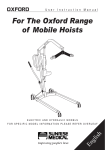
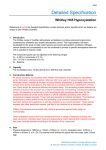
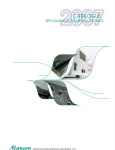

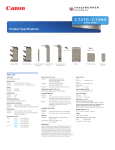
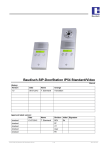
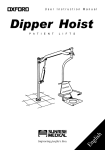
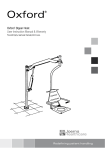
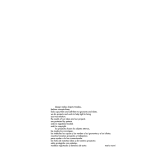
![PISQ [PDF - 6436.46 kbytes] - Istituto Superiore di Sanità](http://vs1.manualzilla.com/store/data/006158182_1-4db99841d85dfec84390651ab81c5cf2-150x150.png)
